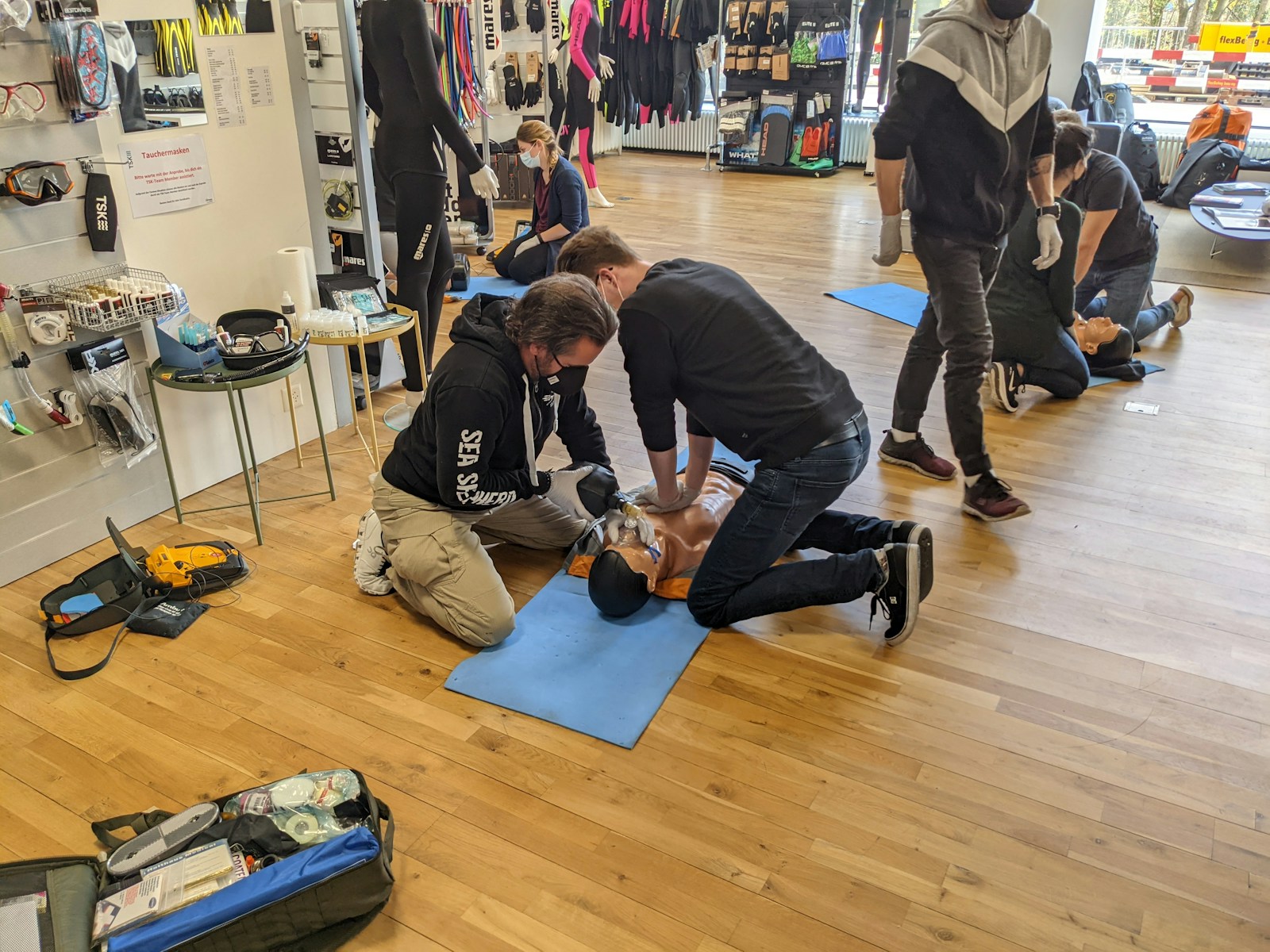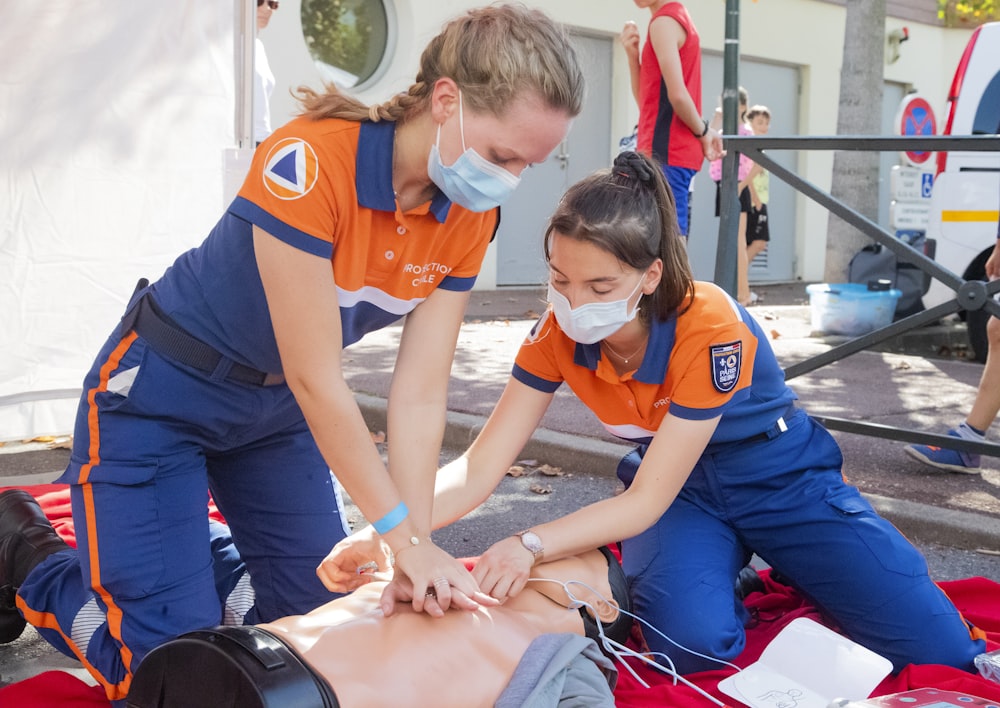Image Source: Unsplash
## Introduction to Choking Emergencies
Choking is a frightening and urgent medical emergency that can happen to anyone, at any age, and at any time. It is a situation that demands immediate attention and the right knowledge to handle it effectively. As a first responder—whether a loved one, a friend, or a stranger—you might be the lifeline the victim needs. Understanding what to do when someone is choking in front of you could indeed save a life.
When an object, usually a piece of food, obstructs the airway, it can prevent oxygen from reaching the lungs and the brain. Time is of the essence, as the brain can only survive for a few minutes without oxygen before irreversible damage begins. Therefore, recognizing the signs of choking and knowing the appropriate actions to take becomes a crucial skill.
I’ve been in situations that required quick thinking and prompt action during choking emergencies. The experience taught me the importance of staying calm and applying the correct technique to clear the airway. In this article, I will share the knowledge and steps that everyone should know to effectively respond to a choking emergency.
The Signs and Symptoms of Choking
Recognizing the signs of choking is the first step to helping someone in need. A choking person may not always be able to articulate what’s happening to them, so it’s important to be aware of the non-verbal cues that might indicate a person is in distress. The universal sign for choking is hands clutching the throat, but there are other symptoms to watch for.
A choking person may have a sudden inability to speak or breathe. They might cough forcefully or make high-pitched noises as they try to expel the object blocking their airway. In some cases, there may be no sound at all if the airway is completely blocked. Their skin, lips, and nails may also turn blue—a condition known as cyanosis—due to the lack of oxygen.
It’s also common for someone who’s choking to become visibly panicked, with a look of fear or confusion in their eyes. They might wave their arms frantically or behave erratically as they struggle to breathe. In severe cases, the person may lose consciousness. Being able to quickly identify these signs will prepare you to act swiftly and effectively.
Understanding the Heimlich Maneuver
When faced with a choking emergency, the Heimlich maneuver is one of the most effective first aid techniques to dislodge an object from a person’s airway. Named after Dr. Henry Heimlich, who introduced the technique in 1974, it involves a series of abdominal thrusts that exert pressure on the diaphragm, thereby forcing air up the trachea and pushing the obstruction out of the airway.
The beauty of the Heimlich maneuver is that it can be performed by anyone, regardless of their strength or the size of the person in distress. It can be applied on adults, children, and even on oneself in a choking situation. However, it’s not recommended for infants under one year old, as their bodies are too fragile for the force of abdominal thrusts and require a different approach.
To perform the Heimlich maneuver correctly, it’s essential to position your hands accurately and apply the right amount of force. This technique has been credited with saving countless lives, and understanding how to execute it properly could make you a hero in an emergency.
Step-by-Step Guide to Performing the Heimlich Maneuver
If you find yourself in a situation where someone is choking and you’ve identified that they require immediate help, follow these steps to perform the Heimlich maneuver:
- First, make sure the person is standing if possible. If they are sitting, help them to stand up.
- Stand behind the person and wrap your arms around their waist. Make a fist with one hand and place the thumb side of your fist just above the person’s navel, well below the ribcage.
- Grasp your fist with your other hand and press it into the person’s abdomen with a quick, upward thrust. Be sure to avoid pressing directly on the ribcage, as this could cause injury.
- Continue performing these abdominal thrusts in a rapid sequence until the object is expelled from the person’s airway or until they become unconscious. If the person becomes unconscious, you will need to begin CPR and call for emergency services immediately.
It’s important to note that the Heimlich maneuver can cause injury, so it should only be used when it’s clear that the person is choking and unable to clear the obstruction themselves. After the emergency is over, the person should still seek medical attention to ensure that no damage has been done to their internal organs.
Alternative Techniques for Choking Emergencies
While the Heimlich maneuver is a widely recognized and effective method for assisting a choking victim, there are alternative techniques that can also be used in certain situations. For example, if you are alone and choking, you won’t be able to perform the Heimlich maneuver on yourself. In such a case, you can perform abdominal thrusts against a hard surface such as the back of a chair or a countertop.
For pregnant women or individuals who are obese, standard abdominal thrusts may not be feasible. Instead, chest thrusts can be performed. Place your hands in the middle of the chest and press with quick thrusts, similar to the motion of the Heimlich maneuver, but aimed at the chest rather than the abdomen.
Infants under one year old require a different approach entirely. For a choking infant, you would perform a combination of back slaps and chest thrusts. Hold the infant face down on your forearm, supporting their head with your hand, and give five firm back slaps between the shoulder blades with the heel of your hand. If the object is not dislodged, flip the infant over and perform five chest thrusts using two fingers in the center of the chest. Repeat this cycle until the object is removed or emergency services arrive.
When to Call for Professional Help
Knowing when to call for emergency medical assistance is a critical component of responding to a choking emergency. If the person is unable to breathe, speak, cough, or if they lose consciousness, you need to call for help immediately. If you’re not alone, instruct someone else to call emergency services while you begin first aid.
Even if the choking episode is resolved and the person appears to be breathing normally again, it is still important to seek medical attention. There could be internal injuries or remaining obstructions that are not immediately apparent. Furthermore, a healthcare professional can provide a thorough examination to ensure that the person’s airway is completely clear and that there are no complications.
Remember, your first priority is the safety and well-being of the choking individual. If at any point you feel uncertain or overwhelmed, call for professional help. Emergency operators can also guide you through the steps of first aid while help is on the way.
CPR and First Aid Training for Choking Emergencies
Being prepared with CPR and first aid training is invaluable, not just for choking emergencies but for a variety of critical situations. These skills are easy to learn and are taught by numerous organizations across the country. During training, you will practice on mannequins to simulate real-life scenarios, gaining the confidence and muscle memory needed to act effectively in an emergency.
CPR training often includes instruction on how to perform the Heimlich maneuver and other lifesaving techniques. You’ll learn how to assess the situation, determine the best course of action, and provide help until professional medical assistance arrives. The knowledge and skills gained from such training empower you to be a capable first responder, making a significant difference in someone’s chances of survival.
I highly recommend that everyone take the time to get certified in CPR and first aid. It’s an investment in your own abilities and the safety of those around you. You never know when you’ll be the one present in a life-threatening situation, and having these skills can turn you from a bystander into a lifesaver.
Preventing Choking Incidents
Prevention is always better than cure, and this is particularly true for choking incidents. One of the most effective ways to prevent choking is to be mindful of how we eat. Chew food thoroughly, avoid talking or laughing while eating, and avoid consuming foods that are known to be choking hazards, especially for children, such as grapes, nuts, and hard candy.
For parents and caregivers, it’s essential to supervise young children while they eat and to cut their food into small, manageable pieces. Additionally, keep small objects that could be potential choking hazards out of reach. Educating children on the dangers of putting non-food items in their mouths is also a key aspect of prevention.
In institutional settings like schools and eldercare facilities, staff should be trained in first aid and emergency response protocols. Regular safety drills and refresher courses can help ensure that everyone knows how to respond in the event of a choking incident. Clear labeling of foods that may pose a risk and careful mealtime supervision can also help minimize the risk of choking.
Common Misconceptions about Choking
Throughout my experience and research, I’ve encountered several misconceptions about choking that can be harmful in an emergency. One common myth is that if someone is coughing, they’re not truly choking and don’t need help. In reality, coughing is a sign that the airway is partially blocked, and the person may still need assistance if they can’t clear the obstruction themselves.
Another misconception is the idea that drinking water can help dislodge food stuck in the throat. This can actually worsen the situation by pushing the obstruction tighter against the airway. Similarly, some people believe that hitting a choking person on the back while they are upright can dislodge the item. This is not true and can potentially push the object further down.
It’s crucial to rely on proven techniques like the Heimlich maneuver and to seek training from credible sources. Myths and misinformation can lead to ineffective or dangerous responses in an emergency, so it’s important to stay informed and prepared with accurate information.
Conclusion
What do you do when someone is choking in front of you? You take action. You have the power to be a crucial part of the chain of survival in a choking emergency. By understanding the signs and symptoms of choking, learning how to perform the Heimlich maneuver and alternative techniques, and knowing when to call for professional help, you can save a life.
I urge you to invest in CPR and first aid training, not only for the sake of those around you but for your own peace of mind. It’s a skill set that everyone should have. Additionally, take preventive measures to minimize the risk of choking incidents in your environment.
Choking emergencies can happen to anyone, anywhere. Let’s dispel the common misconceptions and be prepared to act with confidence. Remember, when it comes to saving a life, every second counts.




















